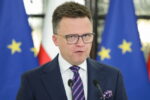At the Economic Forum in Krynica representatives of the government and state-owned companies are implying they are ready to adopt an energy policy that is less dependent on coal – writes Wojciech Jakóbik, BiznesAlert.pl’s editor in chief.
The first message about the upcoming change actually appeared before the Forum. Despite the efforts of the coal lobby Polska Grupa Energetyczna (PGE) stuck to its original plan to build a gas unit at the Dolna Odra power plant near Szczecin. In June the word was still that the new unit would be coal-fired. While gas is more expensive on the Polish market than coal (PLN 5.5-6 m to PLN 2-3 m per 1000 MW), the construction of the facility and costs resulting from the European Union’s climate policy are lower. By the end of the second quarter of 2018 a feasibility study will be presented. It remains unknown whether a decision on the Dolna Odra power plant means PGE will abandon coal-fired units, but it definitely means the company started to take into consideration external factors, such as the climate policy in making decisions on the development of its generation capacity. The gas unit will be also more flexible, which according to the interviewees of the Gazeta Prawna daily is important for the company to balance the facility’s operation.
While in an interview for BiznesAlert.pl, Piotr Naimski the Government Plenipotentiary for Strategic Energy Infrastructure argued that Poland should not increase its dependence on gas by developing more gas-fired generation capacities, currently his opinions on the subject have become more moderate. In an interview for the Polish Press Agency he admitted that „in the Polish power generation system there is room for a few gas units, which will perform regulatory functions.” In June he talked about one unit only. It is worth reminding in this context that PKN Orlen uses gas units in Płock and Włocławek. PGNiG Termika, which is constructing gas units in Stalowa Wola and Żerań, also wants to promote this kind of power generation.
At the same time the minister announced that Poland would want to re-export about 4 bcm of gas annually from the Northern Gateway to neighboring countries. Naimski was talking about the expanded LNG terminal and the Norwegian Corridor, which could yield 16-18 bcm of gas a year by 2022. However, he said the situation could completely change within a few years. In case of problems with the re-export the raw material could fuel Poland’s gas units. Still, the goal is to sell the blue fuel to our neighbors with a profit and even in larger quantities. This will depend on the economic attractiveness of the deliveries from the Gateway.
It is also known that PGE is still interested in Polenerga’s offshore wind farm licenses. I wrote about it last June. However, a different state-owned rival may want to buy the assets. Expanding portfolio by adding wind turbines could allow the company to ensure more electricity for north-east Poland without the necessity to increase the costly CO2 emissions.
It would be a real bombshell if it was revealed that one of the energy companies under the control of the state treasury wanted to invest in wind farms. Yet, it would be a solution that would allow to reach out for funds from the European Investment Bank (EBI), which knows how to be generous when the investment is not about coal assets, which it does not support as it is against its bylaws. According to Energa, during the Economic Forum in Krynica, the EBI granted loans for almost EUR 1 bn for strategic investments in the energy and research and development sectors. Out of that sum, EBI gave EUR 250 m to Energa to modernize and expand the electric grid in northern and central Poland. Apart from distribution, EBI could also support production, but it will not bankroll coal. A compromise in the form of gas assets and renewable energy sources could be made. Soon Polish energy companies may actually invest in renewables. Perhaps it would be possible to use the Modernization Fund to this end, which is to be part of EU’s emissions trading system.
There remains the question of nuclear energy. Representatives of the Energy Ministry, including Minister Krzysztof Tchórzewski, Deputy Minister Andrzej Piotrowski and Government Plenipotentiary for Strategic Energy Infrastructure Piotr Naimski tried to convince me that they wanted to construct a nuclear power plant and would find the money to do it. In their opinion a financial model bankrolled by domestic funds would be surprising, but within Poland’s capabilities. Still, the resistance of the coal lobby needs to be crushed, which is possible if one looks at the success of PGE and Jan Szyszko’s Environment Ministry. I previously wrote about this dispute. Despite the fact that the media report on different numbers, minister Tchórzewski said in Krynica that Poland „needs a ca. 4500 MW nuclear power plant with three units.” Another argument for the plant is the fight against emissions.
Therefore, it seems that after numerous discussions the government and the state-owned companies included in their plans an important external factor, i.e. the EU’s climate policy, which has been undersigned by Poland. This may be reflected in the updated Poland’s Energy Policy by 2030, which is to be revealed in the second half of the year. In the past I wrote that it was impossible to sustain the carbon status quo. Should we expect more news on the turning point in the country’s energy policy?






